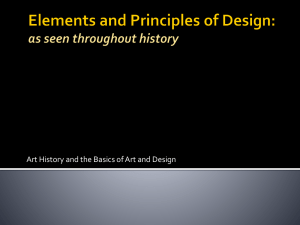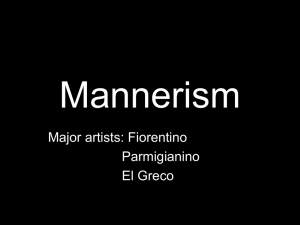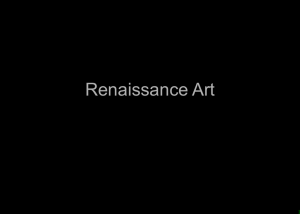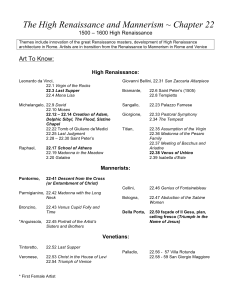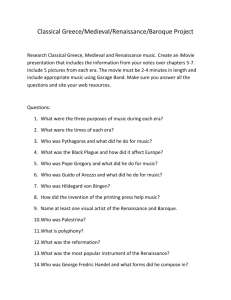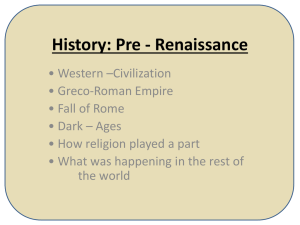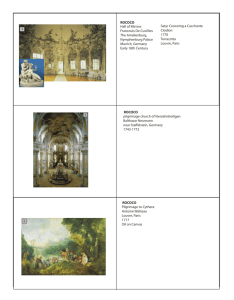Studyguide for Test #2
advertisement
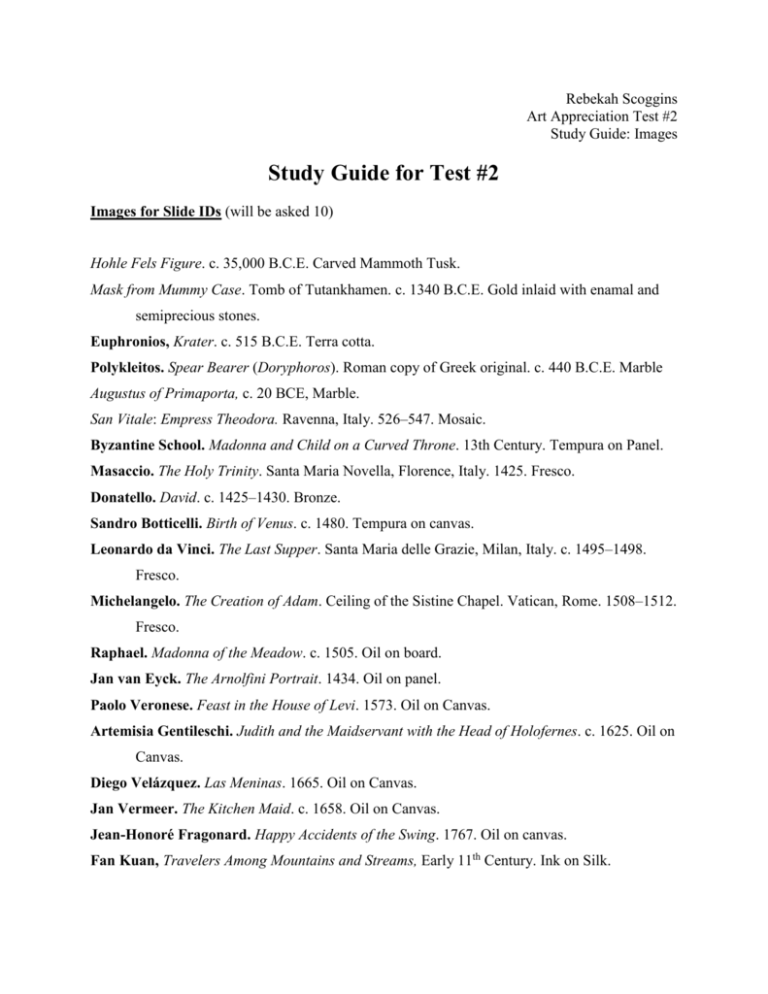
Rebekah Scoggins Art Appreciation Test #2 Study Guide: Images Study Guide for Test #2 Images for Slide IDs (will be asked 10) Hohle Fels Figure. c. 35,000 B.C.E. Carved Mammoth Tusk. Mask from Mummy Case. Tomb of Tutankhamen. c. 1340 B.C.E. Gold inlaid with enamal and semiprecious stones. Euphronios, Krater. c. 515 B.C.E. Terra cotta. Polykleitos. Spear Bearer (Doryphoros). Roman copy of Greek original. c. 440 B.C.E. Marble Augustus of Primaporta, c. 20 BCE, Marble. San Vitale: Empress Theodora. Ravenna, Italy. 526–547. Mosaic. Byzantine School. Madonna and Child on a Curved Throne. 13th Century. Tempura on Panel. Masaccio. The Holy Trinity. Santa Maria Novella, Florence, Italy. 1425. Fresco. Donatello. David. c. 1425–1430. Bronze. Sandro Botticelli. Birth of Venus. c. 1480. Tempura on canvas. Leonardo da Vinci. The Last Supper. Santa Maria delle Grazie, Milan, Italy. c. 1495–1498. Fresco. Michelangelo. The Creation of Adam. Ceiling of the Sistine Chapel. Vatican, Rome. 1508–1512. Fresco. Raphael. Madonna of the Meadow. c. 1505. Oil on board. Jan van Eyck. The Arnolfini Portrait. 1434. Oil on panel. Paolo Veronese. Feast in the House of Levi. 1573. Oil on Canvas. Artemisia Gentileschi. Judith and the Maidservant with the Head of Holofernes. c. 1625. Oil on Canvas. Diego Velázquez. Las Meninas. 1665. Oil on Canvas. Jan Vermeer. The Kitchen Maid. c. 1658. Oil on Canvas. Jean-Honoré Fragonard. Happy Accidents of the Swing. 1767. Oil on canvas. Fan Kuan, Travelers Among Mountains and Streams, Early 11th Century. Ink on Silk. Terms to Know and Understand Paleolithic Neolithic hierarchic scale Krater o Red figure style kouros contrapposto capitals Doric column Ionic column Corinthian column colonnade metopes pediment portico oculus coffers iconoclasts icons Chi-Rho (XP) Renaissance Humanism Chiaroscuro Genre painting Baroque o Light Source o Foreshortening Rococo General Concepts to Study 1. Make sure you know the focuses of the different eras/movements: Greece, Roman, Medieval/Middle Ages, Italia Renaissance, Northern Renaissance, and Baroque. 2. Think about: a. The different functions of the art works. b. The kind of comparisons that can be made between the different works, such as the comparison between Raphael’s Madonna of the Meadow and the Byzantine School’s Madonna and Child on a Curved Throne. c. The main characteristics of each era/movement listed in #1 and ways to explain how works represent each one. 3. Know general information about other art works that are not on the Slide ID list. I will ask short answer and essay questions about art that we discussed in class that are not 4. 5. 6. 7. listed on the slide ID list. I will not expect you to know the kind of information I ask in the slide IDs, but you will need to know some things about them. Know how religion or ritual played a part in each era. For example, the Egyptian burial tradition and its religious connotations, Greek and Roman uses of the temple, Middle Ages/Byzantine use of the church and images/icons, Italian Renaissance mixture of human and spiritual, etcetera. The way in which the visual elements (line, color, form, shape, etcetera) play a role in art works. For example, I may ask: how does line and color play a role in Caravaggio’s The Calling of Saint Matthew? Think about the changes over time across medium and or/movements in term of the visual, method of creation/construction (how it was sculpted/painted), and purpose. Compare the differences between similar or successive movements, such as Paleolithic and Neolithic, Mesopotamia and Egypt, Greek and Roman, Italian Renaissance and Northern Renaissance, Baroque and Rococo, etcetera. As a general rule, if we talked about a concept or a work a long time in class, it is likely that I will ask a question about it.

